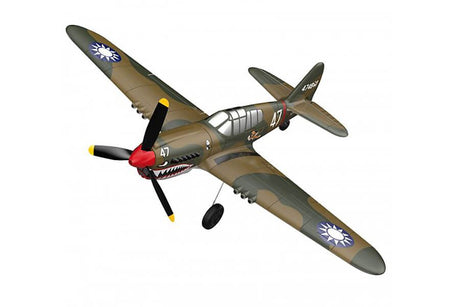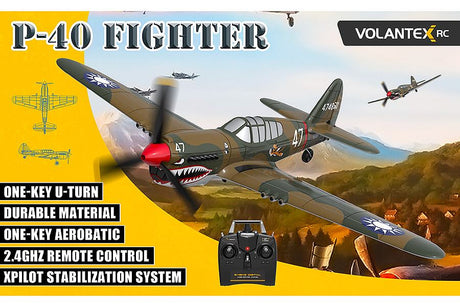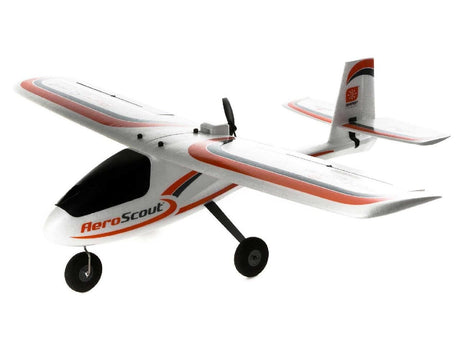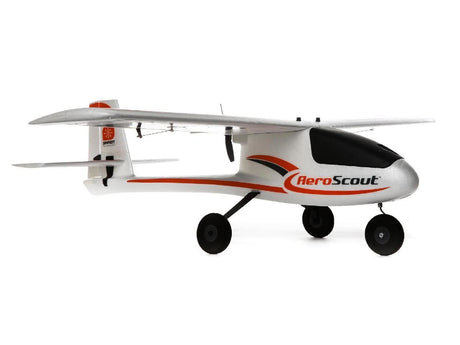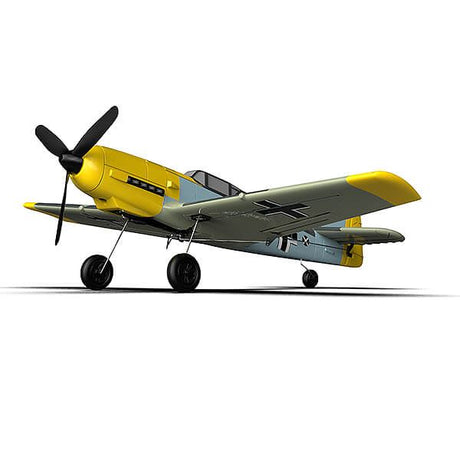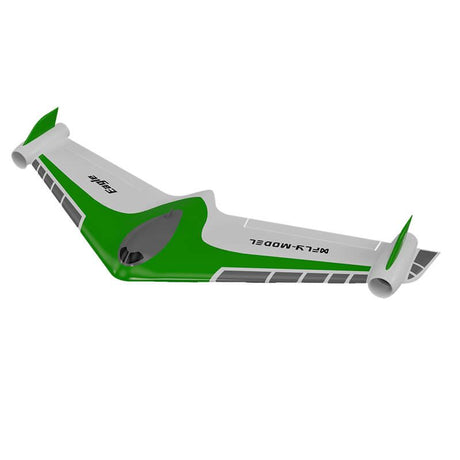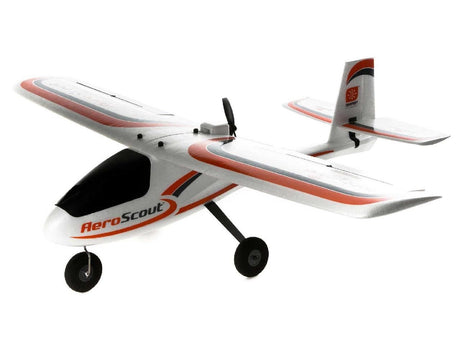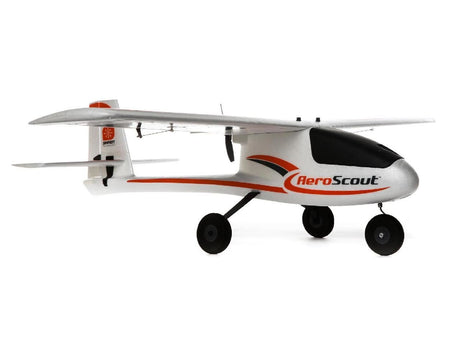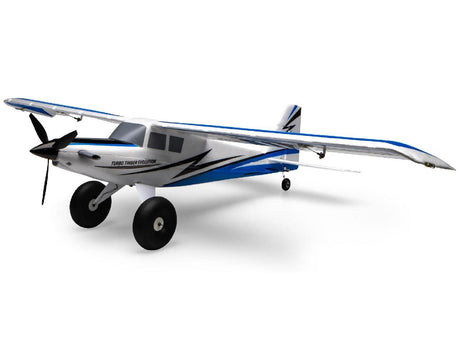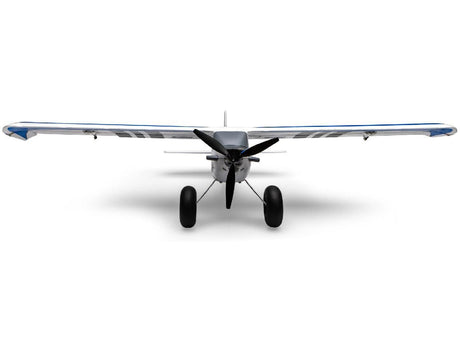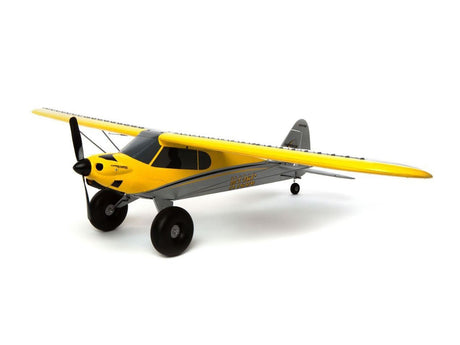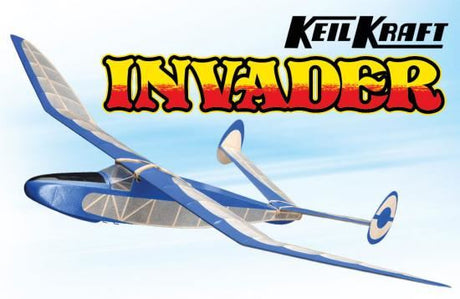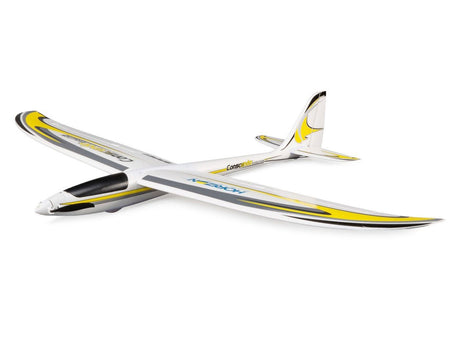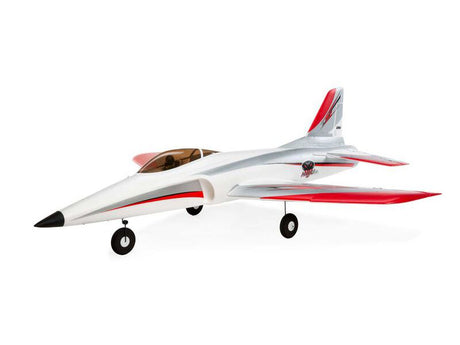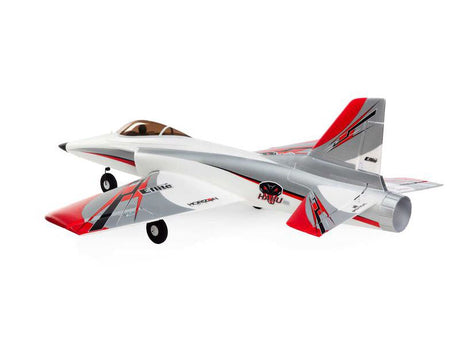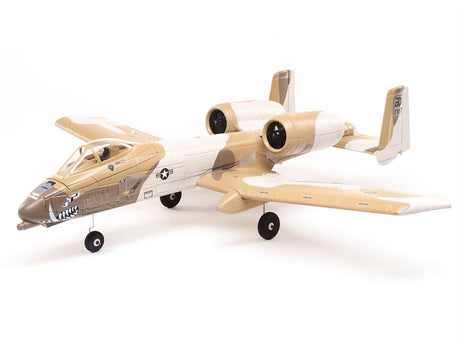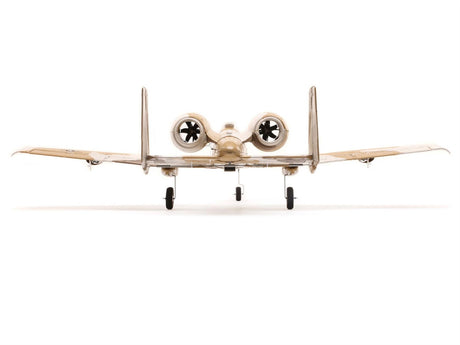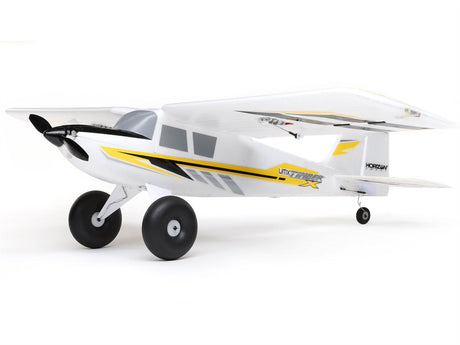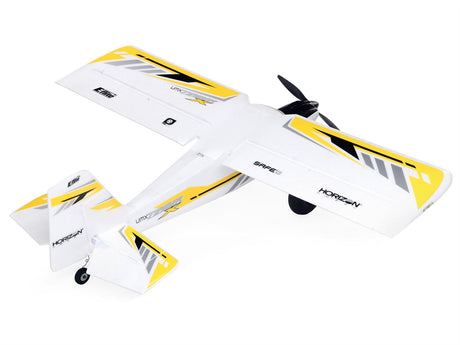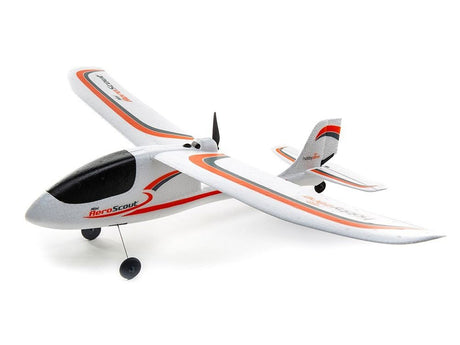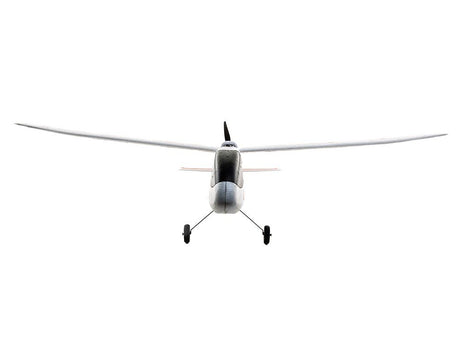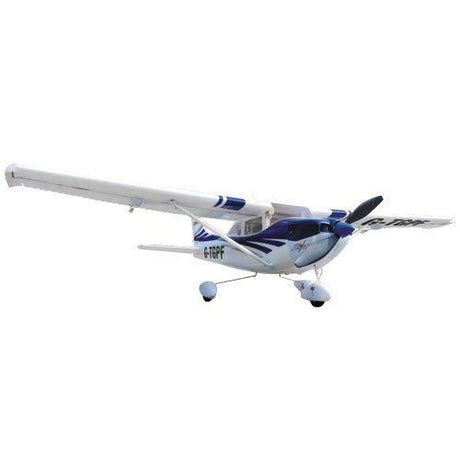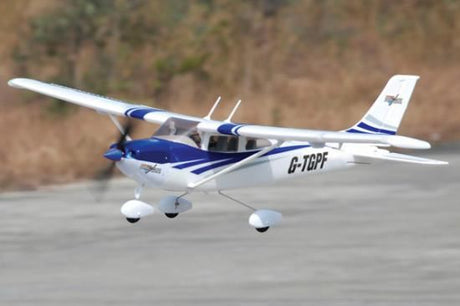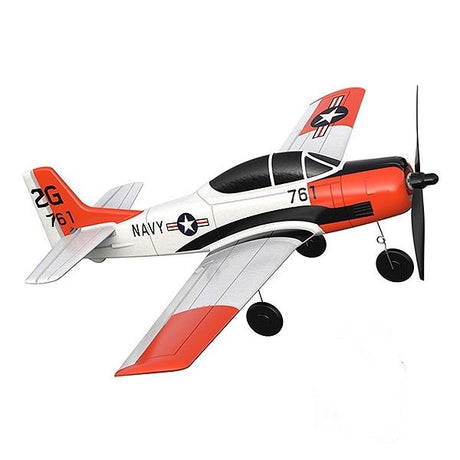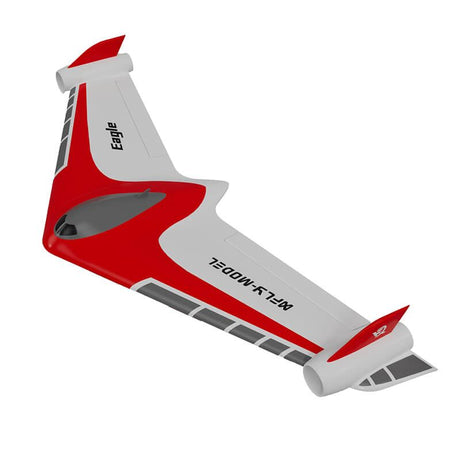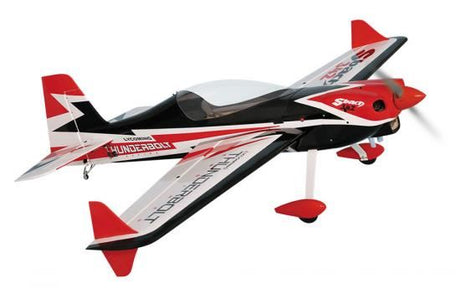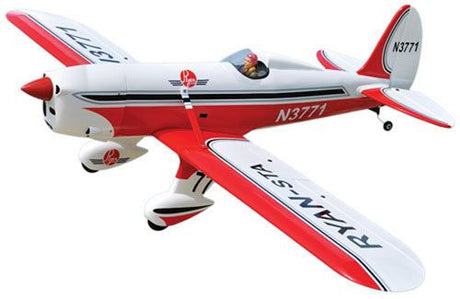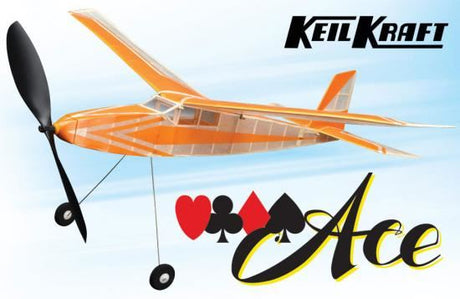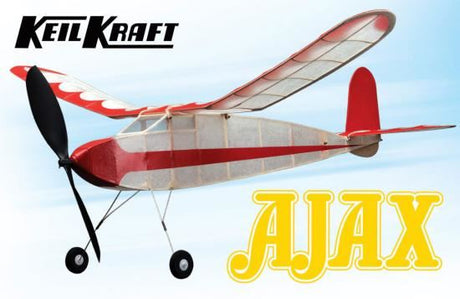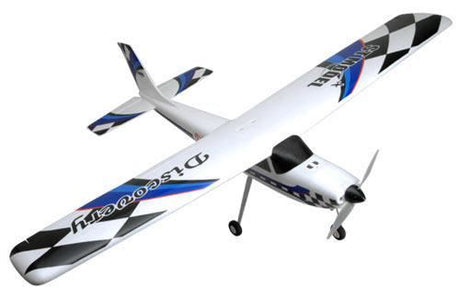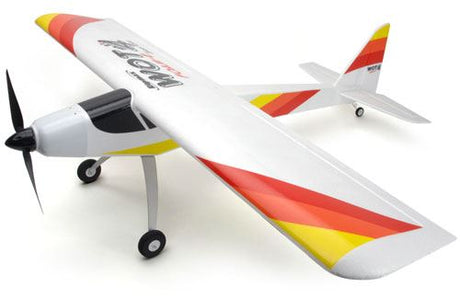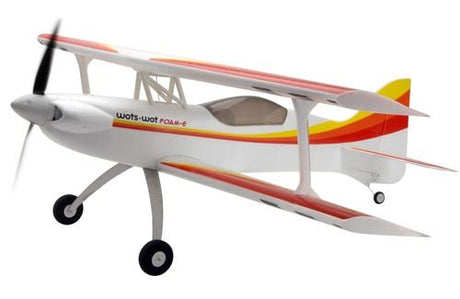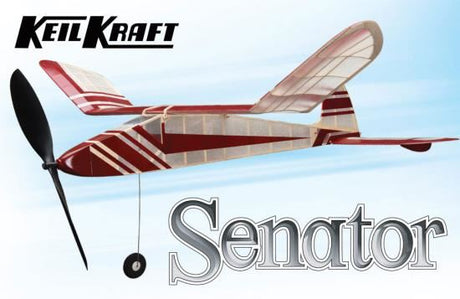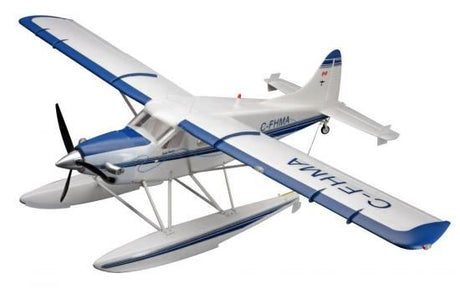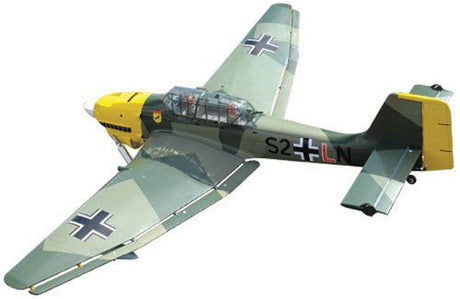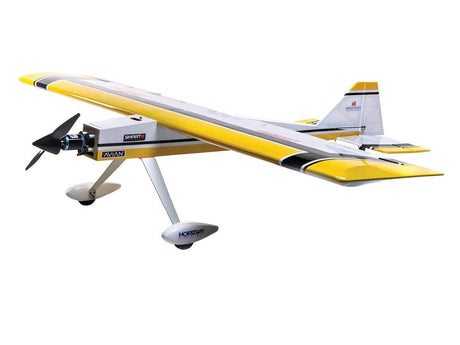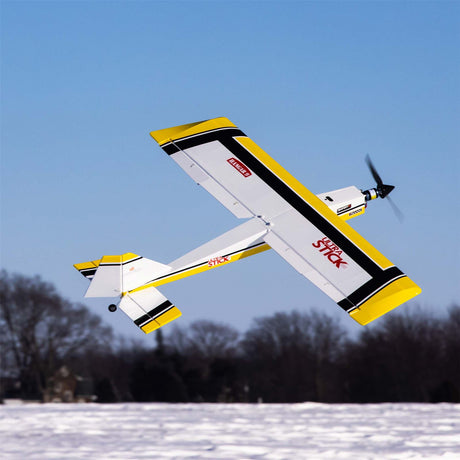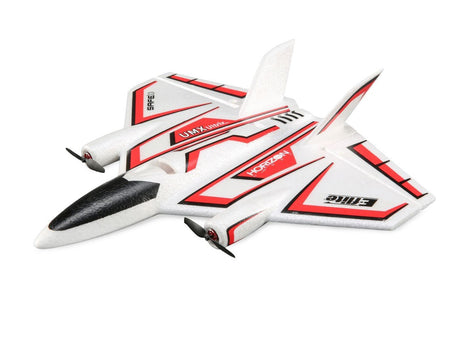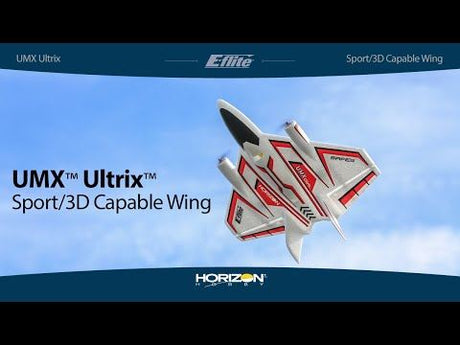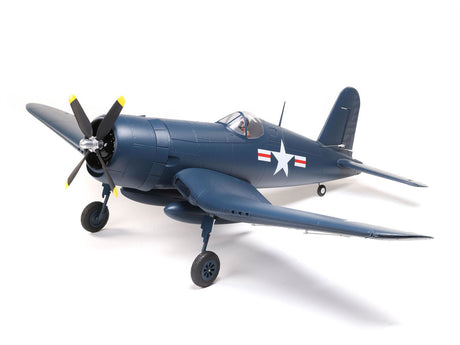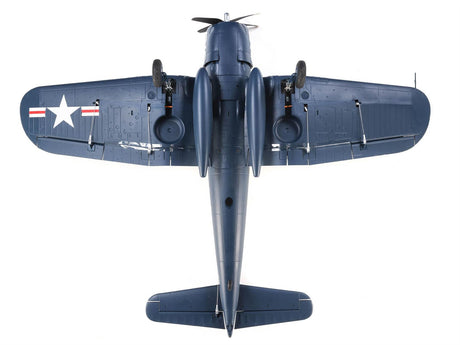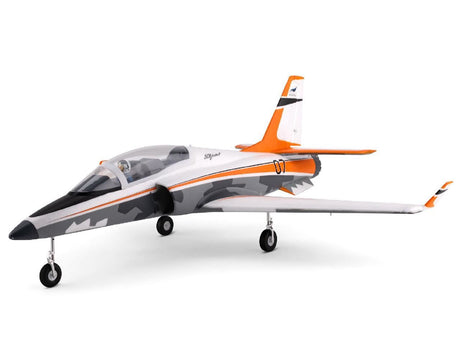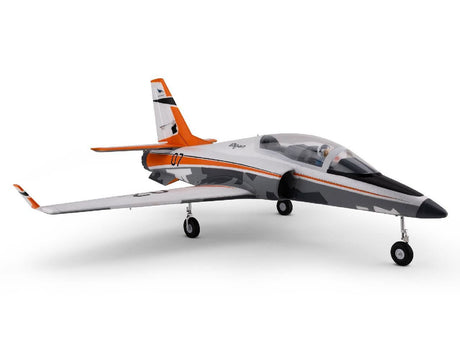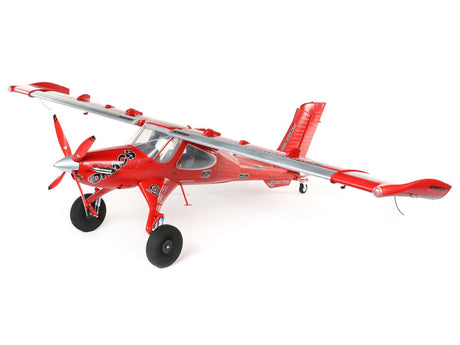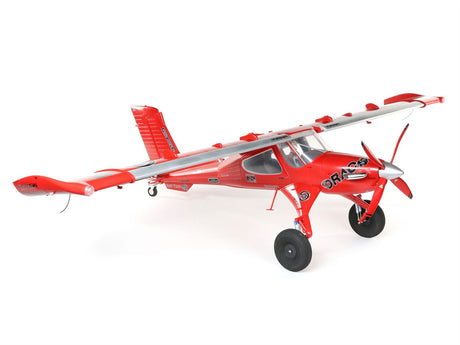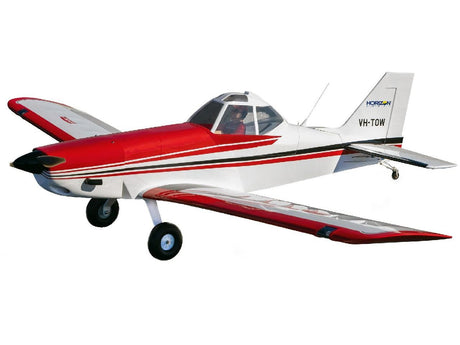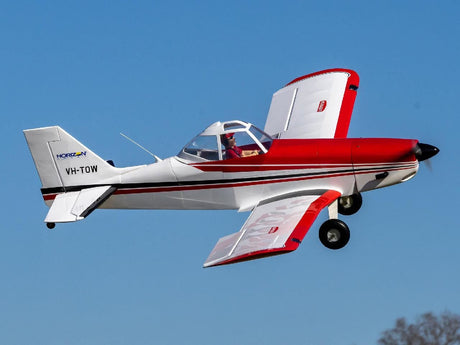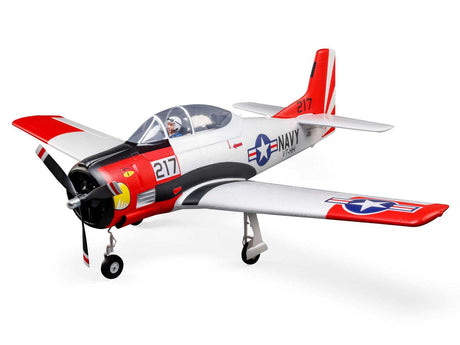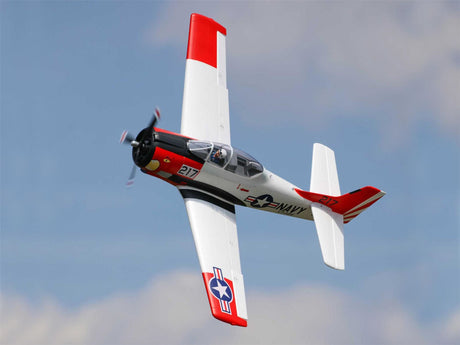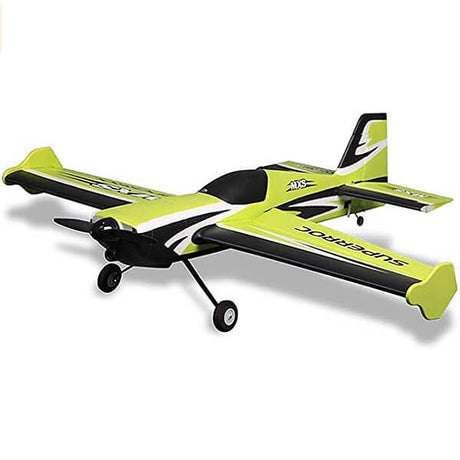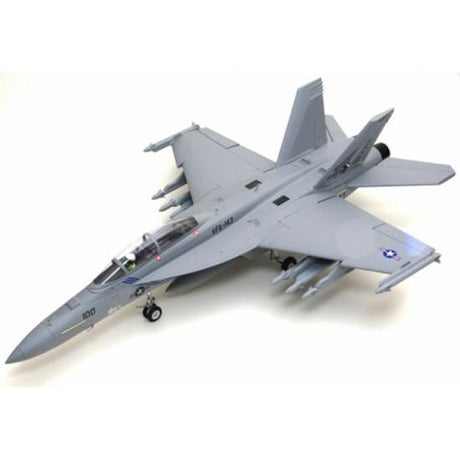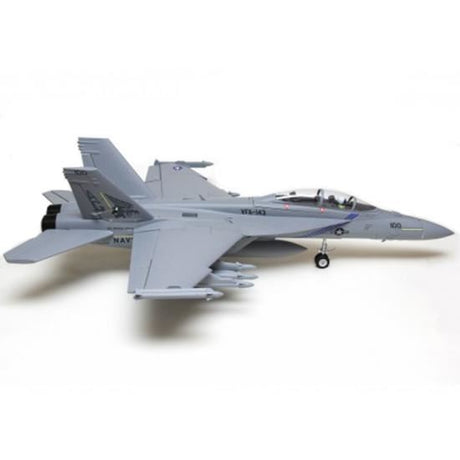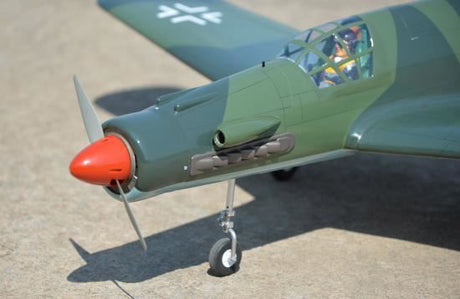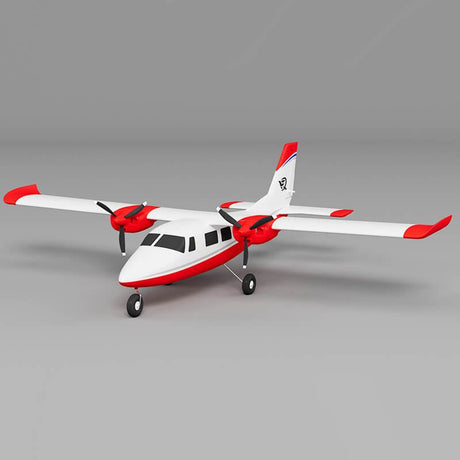RC Planes
Our extensive collection of RC Planes are perfect for all ages and skill levels, our remote control planes offer thrilling speed, precise control, and enjoyment. Discover our range of RC Jets, Micro Planes, Trainer Planes and more.
Volantex | V761-13
Volantex P40 Warhawk 4Ch 400mm Brushed W/Gyro Epp Rtf
Available to orderRRP: £94.99£85.49Unit price /Unavailable
Save £9.50HobbyZone | HBZ380001
Hobbyzone Aeroscout S 2 1.1M Rtf Basic With Safe
Available to orderRRP: £249.99£224.99Unit price /Unavailable
Save £25Volantex | V761-11
No reviewsVolantex Messerschmitt Bf109 400mm Brushed W/Gyro Epp Rtf
Available to orderRRP: £94.99£85.49Unit price /Unavailable
Save £9.50XFly Model | XF115PG-G
Xfly Eagle 40mm Edf Flying Wing Without Tx/Rx/Battery With Gyro - Green
Available to orderRRP: £159.99£143.99Unit price /Unavailable
Save £16HobbyZone | HBZ385001
Hobbyzone Aeroscout S 2 1.1M Bnf Basic
Available to orderRRP: £209.99£188.99Unit price /Unavailable
Save £21E Flite | EFLU8950
E Flite Umx Turbo Timber Evolution Bnf Basic With As3X And Safe
Available to orderRRP: £199.99£179.99Unit price /Unavailable
Save £20HobbyZone | HBZ32500
Hobbyzone Carbon Cub S2 1.3M Bnf Basic - Hbz32500
Available to orderRRP: £324.99£292.49Unit price /Unavailable
Save £32.50Keil Kraft | KK1020
Keil Kraft Invader Kit - 40" Free-Flight Towline Glider (A-Kk1020)
Available to orderRRP: £36.99£33.29Unit price /Unavailable
Save £3.70Volantex | V761-15
VOLANTEX MITSUBISHI ZERO 4CH 400MM BRUSHED w/GYRO EPP RTF
Available to orderRRP: £94.99£85.49Unit price /Unavailable
Save £9.50E Flite | EFL01675
E Flite Conscendo Evolution 1.5M Pnp (Efl01675)
Available to orderRRP: £224.99£202.49Unit price /Unavailable
Save £22.50E Flite | EFL015001
E Flite Habu Sts 70mm Edf Jet Rtf Basic Smart Trainer With Safe
Available to orderRRP: £489.99£440.99Unit price /Unavailable
Save £49E Flite | EFLU6550
E Flite Umx A-10 Thunderbolt Ii 30mm Edf Bnf Basic
Available to orderRRP: £224.99£202.49Unit price /Unavailable
Save £22.50E Flite | EFLU7950
E Flite Umx Timber X Bnf Basic With As3X And Safe Select, 570mm
Available to orderRRP: £199.99£179.99Unit price /Unavailable
Save £20Make It Build It | TGP0355B
Top Gun Park Flite Cessna 182 Skylane Rtf Mode 2 - Blue
Available to orderRRP: £159.99£143.99Unit price /Unavailable
Save £16Volantex | V761-9
Volantex T-28 Trojan 4Ch 400mm Brushed W/Gyro Epp Rtf
Available to orderRRP: £89.99£80.99Unit price /Unavailable
Save £9FMS | FMS090P
Available to orderRRP: £464.99£418.49Unit price /Unavailable
Save £46.50XFly Model | XF115PG-R
Xfly Eagle 40mm Edf Flying Wing Without Tx/Rx/Battery With Gyro - Red
Available to orderRRP: £159.99£143.99Unit price /Unavailable
Save £16Black Horse | BH174
Black Horse Sbach 342 33Cc Artf (A-Bh174)
Available to orderRRP: £999.99£899.99Unit price /Unavailable
Save £100Black Horse | BH073A
Black Horse Ryan Sta .55 Artf (A-Bh073A)
Available to orderRRP: £649.99£584.99Unit price /Unavailable
Save £65Keil Kraft | KK2020
Keil Kraft Ace Kit - 30" Free-Flight Rubber Duration (A-Kk2020)
Available to orderRRP: £37.99£34.19Unit price /Unavailable
Save £3.80Keil Kraft | KK2010
Keil Kraft Ajax Kit - 30" Free-Flight Rubber Duration (A-Kk2010)
Available to orderRRP: £41.99£37.79Unit price /Unavailable
Save £4.20ST Models | STM110
St Model Discovery Artf Trainer (A-Stm110)
Available to orderRRP: £299.99£269.99Unit price /Unavailable
Save £30Ripmax | CF020A
Ripmax Wot4 Foam-E Mk2+ Artf (A-Cf020A)
Available to orderRRP: £229.99£206.99Unit price /Unavailable
Save £23Ripmax | CF050
Ripmax Wots Wot Foam-E Artf (A-Cf050)
Available to orderRRP: £309.99£278.99Unit price /Unavailable
Save £31Keil Kraft | KK2060
Keil Kraft Senator Kit - 32" Free-Flight Rubber Duration (A-Kk2060)
Available to orderRRP: £41.99£37.79Unit price /Unavailable
Save £4.20ST Models | STM190
St Model Turbo Beaver Ep Artf (Including Floats & Wheels) (A-Stm190)
Available to orderRRP: £387.75£348.99Unit price /Unavailable
Save £38.76Black Horse | BH080A
Black Horse Ju87B Stuka (New Version) (A-Bh080A)
Available to orderRRP: £749.99£674.99Unit price /Unavailable
Save £75Hangar 9 | HAN4775
Available to orderRRP: £739.99£665.99Unit price /Unavailable
Save £74E Flite | EFLU6450
Available to orderRRP: £154.99£139.49Unit price /Unavailable
Save £15.50E Flite | EFL18550
E Flite F4U-4 Corsair 1.2M Bnf Basic With As3X And Safe Select
Available to orderRRP: £419.99£377.99Unit price /Unavailable
Save £42E Flite | EFL077500
E Flite Viper 70 Edf Jet Bnf Basic W/ As3X And Safe Select
Available to orderRRP: £469.99£422.99Unit price /Unavailable
Save £47E Flite | EFL12550
E Flite Draco 2.0M Smart Bnf Basic With As3X And Safe Select
Available to orderRRP: £759.99£683.99Unit price /Unavailable
Save £76Hangar 9 | HAN7035
Hangar 9 Pawnee Brave 20Cc Arf
Available to orderRRP: £599.99£503.99Unit price /Unavailable
Save £96E Flite | EFL18350
E Flite T-28 Trojan 1.2M Bnf Basic With Smart
Available to orderRRP: £419.99£377.99Unit price /Unavailable
Save £42FMS | ROC021P
Fms Mxs 1100mm Pnpv2 Green (No Reflex)
Available to orderRRP: £249.99£224.99Unit price /Unavailable
Save £25FMS | FMS100P
Fms 875mm F/A-18F Hornet 70mm Edf Artf Grey W/O Tx/Rx/Batt - Fms100P
Available to orderRRP: £414.99£373.49Unit price /Unavailable
Save £41.50Volantex | V761-14
Volantex Sport Cub S2 3Ch 400mm Brushed W/Gyro Epp Rtf
Available to orderRRP: £69.99£62.99Unit price /Unavailable
Save £7Black Horse | BH163
Black Horse Dornier 335 Ep Artf (A-Bh163)
Available to orderRRP: £749.99£674.99Unit price /Unavailable
Save £75XFly Model | XF114P-R
Xfly P68 Twin 850mm Wingspan Without Tx/Rx/Battery - Red
Available to orderRRP: £134.99£121.49Unit price /Unavailable
Save £13.50
RC Planes
What are RC planes?
RC planes, or radio-controlled planes, are model aircraft that are controlled remotely using a handheld transmitter and a receiver within the plane. These planes are often replicas of full-sized aircraft, ranging from simple designs to highly detailed models. The transmitter sends signals to the receiver, which then controls the plane's various functions, such as throttle, ailerons, rudder, and elevators, allowing the operator to pilot the plane through the air.
RC planes can be powered by electric motors, internal combustion engines, or even jet engines, depending on the model. They are popular among hobbyists for both casual flying and competitive events, and they vary in size from small, lightweight models suitable for beginners to large, complex models designed for experienced pilots. RC planes offer a hands-on experience of aviation and are enjoyed by people of all ages.
Where can you use RC planes?
You can fly RC planes in a variety of locations, but it's essential to choose a site that is safe, legal, and appropriate for flying. Designated RC airfields or flying clubs are ideal, as they are specifically set up for RC activities with runways and ample open space.
Parks, open fields, and large rural areas can also be suitable, provided they are free of obstacles and local regulations permit RC flying. Beaches with wide, open stretches are another option, though it's important to be mindful of other visitors and any local restrictions. If you have access to large private property, this can offer a convenient and controlled environment for flying, as long as the area is obstacle-free and you have the owner's permission.
There are also some indoor RC arenas cater to smaller, lighter planes, providing a controlled space for flying, particularly useful for beginners or during bad weather. Always check for any local regulations or restrictions before flying, and ensure you avoid areas with people, animals, or property that could be at risk.
What is an ARTF RC Plane?
An ARTF RC plane is a type of radio-controlled aircraft that comes partially assembled, requiring minimal additional work before it's ready to fly. ARTF (Almost Ready to Fly) planes are popular among hobbyists who want to get their planes airborne quickly without the extensive time commitment needed to build a plane from scratch.
ARTF RC planes include the airframe (the main body of the plane), which is mostly assembled, and may also include components like the motor, servos, and sometimes even the receiver. However, some assembly is still required, such as installing the motor, attaching the wings and control surfaces, and setting up the radio system. Depending on the kit, you may also need to supply and install your own transmitter, receiver, battery, and sometimes additional hardware.
What is an RTF RC Plane?
RTF RC plane is a type of radio-controlled aircraft that comes fully assembled and includes all the necessary components to start flying right out of the box. This makes RTF planes ideal for beginners or those who want a hassle-free flying experience without the need for assembly or additional purchases.
An RTF (Ready to Fly) RC plane typically includes the aircraft, a pre-installed motor, servos, receiver, and a compatible transmitter. It also comes with a battery and a charger, so all you need to do is charge the battery, perform a few quick checks, and you’re ready to fly. Some models may require minimal setup, such as attaching the landing gear or wing, but no complex assembly or additional components are needed.
How to Choose the right RC Plane?
Choosing the right RC plane depends on your experience level and what kind of flying you want to do. For beginners, it's best to start with a trainer plane that is stable and easy to control. These often come as Ready-to-Fly (RTF) models, which are fully assembled and include everything you need to get started. If you have some experience, you might consider a sport plane or a glider, which offer more agility and different flying experiences. Advanced pilots can explore scale models or jet-powered planes, which require more precise control and offer more excitement.
You'll also want to consider the size, power source, and build quality of the plane. Electric planes are quieter and easier to maintain, making them great for beginners, while gas-powered planes offer more power but require more upkeep. Foam planes are durable and easy to repair, ideal for learning, while balsa wood and composite models are for those seeking high performance. Finally, always check reviews and, if possible, visit a local hobby shop or flying club to get advice and see the planes in action before making a purchase.
RC Plane Maintenance Tips
All aircraft require routine maintenance, and here at MIBI we stock a vast array of items to keep you in the air and flying. Put together a basic tool kit that includes a soft brush and cloths to clean off any dirt and debris from the fuselage, a set of quality Hex and Screw Drivers, a Box Wrench, Side Cutters, Needle Nosed and Flat Ended Pliers, Modelling Knifes, A Hack Saw, Thin and Thick Cyno (or Super Glue), Grease, Bearing Oil and a Water Displacing Spray (Such as WD40 or GT85).
These are the basics needed to keep all aircraft well maintained, clean and ready for their next Flight. If you run an IC engined aircraft then after run oil is a good investment, especially if you intend not to run the engine again soon, and an Aircraft Specific foam Stand is also a good investment making storing and working on your Aircraft a much easier proposition. Always check an aircraft over before and after a flight, as nuts and bolts, vital in control surfaces can (and often do) work their way loose. The better you look after your aircraft, the better it will perform and last for you.
Safety Tips for Flying RC Planes
Safety is paramount when flying RC planes. Always choose a suitable location, such as a designated RC flying zone or an open field free from obstacles, people, and animals. Familiarize yourself with local regulations, like those outlined by the Civil Aviation Authority (CAA), which may include height restrictions or registration requirements. Conduct a thorough pre-flight check to ensure all components, such as control surfaces and battery connections, are secure and functioning properly. During flight, maintain a clear line of sight, avoid flying in adverse weather conditions, and keep a safe distance from others to minimize risks. After flying, inspect your plane for any damage and store your equipment properly using tools like those available in our RC maintenance section.
Choosing the Right RC Plane
Selecting the right RC plane depends on your experience and interests. Beginners should opt for trainer planes or Ready-to-Fly (RTF) models, which are stable, easy to control, and include all necessary components for immediate use. Lightweight foam models, like those found in our beginner-friendly RC plane collection, are particularly forgiving in crashes. Intermediate pilots may explore sport planes or gliders for more agility and unique flight experiences. Advanced enthusiasts can challenge themselves with detailed scale models or high-performance gas or jet-powered planes. For guidance, visit your local flying club or explore resources like our how-to guides and troubleshooting section to make an informed choice.

